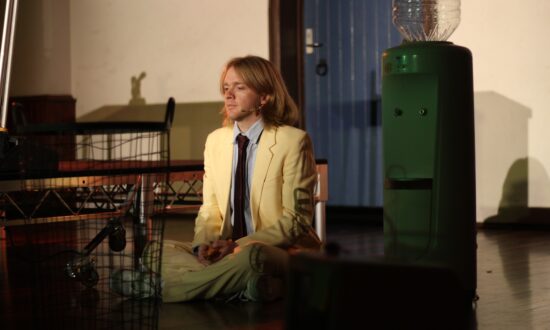The heavy metal door clangs shut. Pale dusk light angles into the tiny, thick-walled cell from a small, high window. On the floor, a device measuring fluctuations in the electromagnetic field emits a steady green light.
If a sceptic was going to be persuaded of the existence of the paranormal, this would be the place. In its day, the Adelaide Gaol saw 45 hangings, the bodies buried in the space between the prison and the high exterior wall, poetically named Murderers’ Row.
As the sun dips below the horizon, the group of ghost-hunters gather outside the entrance. Even before passing through the heavily fortified gates we are standing on an old execution site. The first hangings in South Australia were public affairs – and very popular entertainment.
Once inside, guides Elena and Kosta lead the group through the complex of stone buildings, which between 1841 and 1988 housed more than 300,000 miserable souls, more than 300 of whom never breathed free air again, dying of old age, suicide, violence, fire, riot or execution.
The first paranormal lockdown takes place in A-wing of the New Building, which was only new back in 1879. Paranormal monitoring equipment is distributed – EMF readers, digital thermometers, dowsing rods and movement detectors. Elena instructs us on the use of the rods and suggests questions to ask our spirits (this wing being notorious for perpetrators of violence against women). The cell doors are shut for 10 minutes. It’s spookily atmospheric, even without supernatural visitation.
A walk along Murders’ Row in the dying light is fascinating. Bats wing overhead as we pause by the grave of John Balaban, Adelaide’s first convicted serial killer who disembowelled a sex worker and later murdered his wife, stepson and mother-in-law with a hammer. He is buried next to Elizabeth Woolcock, who in 1873 became the only woman to be executed in South Australia. Her white-gowned figure has apparently been sighted walking the grounds on many occasions.
After a tour of the Hanging Tower, the second lockdown occurs in the Remand Block. A truly depressing place, the tiny cells are jammed with metal bedframes, hinting at the overcrowding that eventually led to the gaol’s closure in 1988. It’s now completely dark. The door shuts. Voices echo. Footsteps are loud in the corridor as nerves get the better of many.

Get InReview in your inbox – free each Saturday. Local arts and culture – covered.
Thanks for signing up to the InReview newsletter.
Some make contact, the dowsing rods proving most receptive to messages from beyond. This sceptic remains unconvinced, yet the experience was far from wasted. The opportunity to explore a notorious colonial building at night was deliciously atmospheric and recommended for anyone with an interest in the dark side of our state’s history.
The Adelaide Gaol Ghost Tour and Investigation runs again on March 6 and 14.
Read more Adelaide Fringe reviews and previews here.
Support local arts journalism
Your support will help us continue the important work of InReview in publishing free professional journalism that celebrates, interrogates and amplifies arts and culture in South Australia.
Donate Here




